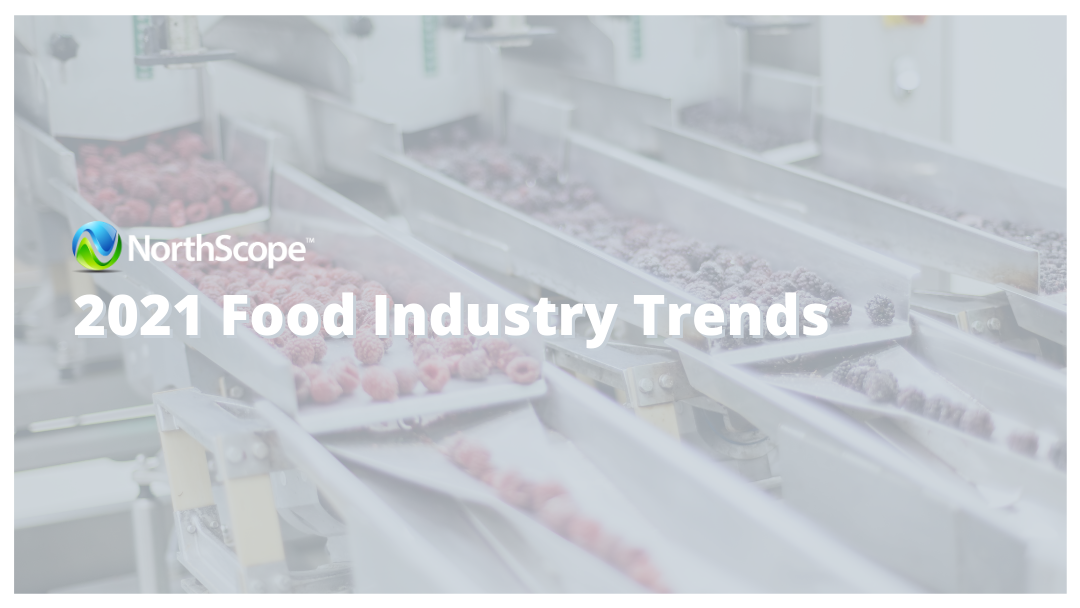2021 Food Industry Trends

Each year, predictions are made regarding what to expect out of the food industry over the next twelve months or so – trends, changes, lasting behaviors from the year before, etc. 2020 was no different in respect to predictions being made at the start of the year. But it was vastly different in respect to those predictions becoming a reality when the COVID-19 pandemic shifted the priorities of the world, with a large focus on the food industry. As such, 2020 turned out to be an unpredictable year. Now, over a month into 2021, the unpredictable nature of 2020 seems to have exposed us to enough data for analysts to make informed predictions about the lasting effects 2020 will have on this year and how things will change regarding the food industry. To help navigate these predictions, we’ve rounded them up into three main categories: 2021 priorities, consumer behaviors and flavor trends.
Priorities
COVID-19 placed a huge emphasis on ensuring safety standards are upheld throughout the food industry and that isn’t expected to change this year. And the safety standards don’t apply only to the food, they also apply to the people processing it as New Food Magazine stated, “Keeping workers safe and restoring confidence in the workforce that their manufacturing facility is a secure environment will continue to be key for companies throughout 2021.” And in order to secure peace of mind surrounding your products, technology can help and will grow as a priority to ensure traceability and transparency. According to Innova Markets, tech-enabled transparency is critical as they said “transparency throughout the supply chain will dominate as a top trend of the year, with six in 10 consumers interested in knowing more about their foods’ origin.” New Food Magazine echoed this sentiment stating “we only foresee technology becoming more important over the next few years. Whether it’s an integration of virtual and physical inspections in the future, the use of blockchain to better trace supplies and prevent fraud, augmented restaurant menus, or cultured meat, we’re only just on the cusp of the ‘Technology Age’.” However, a large part of these safety concerns is of course COVID-19. And it’s because of COVID-19 that concerns over packaging waste has been put on hold, according to New York Times. But, while COVID-19 has many shoppers using plastic bags instead of their own at grocery stores and not thinking twice about heavily packaged, plastic-wrapped food items, that is expected to change as the threat of COVID-19 lessens – meaning that “concern about waste and interest in compostable or reusable containers” will rise.
Consumer behaviors
Speaking of consumers’ concerns about trimming waste, it is also anticipated that sustainability concerns will return to the forefront. Once unique prediction on this front is regarding upcycled foods: products “made from ingredients that would have otherwise been food waste, help to maximize the energy used to produce, transport and prepare that ingredient.” This also includes a refocusing on plant-based options with experts expecting new ingredients throughout 2021 that are made from plants other than the pea, soy and wheat proteins currently dominating the plant-based space. And while plant-based diets support sustainability, many consumers also view plant-based as a healthier option, which is another major concern experts expect consumers to focus on in 2021. With consumers trying to stay healthy, many have and will continue to turn toward their food to support the cause, meaning that “immunity-boosting ingredients have seen a sales bump already, and more companies are expanding their portfolios with those features,” according to Nielsen. Finally, experts agree that consumers likely won’t stop eating at home more than in their pre-pandemic days. This expectation is supported by a Hunter report, according to Food Processing, in which “more than half of Americans claim they will continue cooking more in the future.”
Flavor Trends
Regardless of where consumers are eating in 2021, Food Dive reports that the “demand for flavors with global appeal” will intensify in 2021 thanks to an increased interest in new and novel tastes due to the inability to travel or eat out as much as years prior. Flavorchem also supports this prediction, predicting “products that offer a heightened sensory experience via adventurous taste combinations and flavor exploration will draw consumers experiencing cuisine fatigue while stuck at home.” Tied into these predictions are the themes of “holistic health and wellness, a desire for comfort as well as thirst for adventure” according to Food Business News, sharing, “Refreshing, uplifting flavors that are associated with well-being, like citrus, fruits and berries, are appealing in colder and warmer seasons alike. We anticipate consumers will be more adventurous with their food and beverage choices. We expect product developers to combine comfort foods with exotic ingredients.”
After the year that was 2020 you may be nervous looking ahead to 2021 unsure of what to expect, but with these predictions you can be prepared. And, you don’t have to do it alone. See how NorthScope can help on the technology front with supply chain transparency and more!
